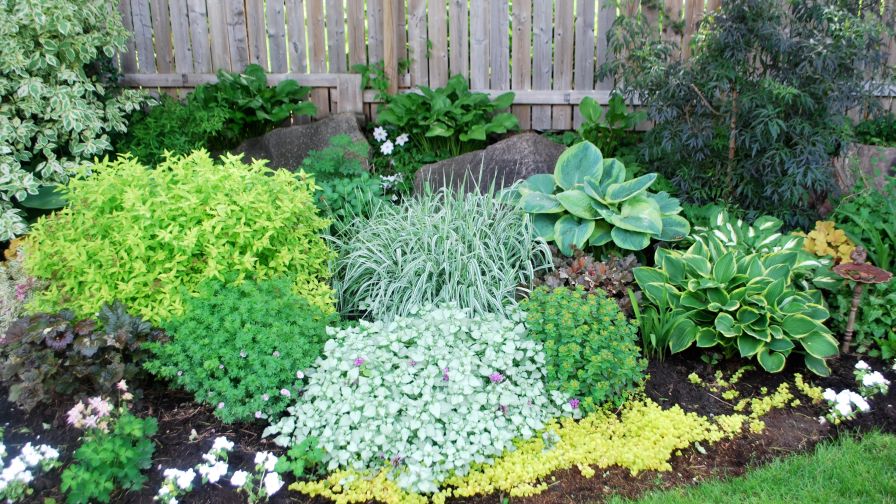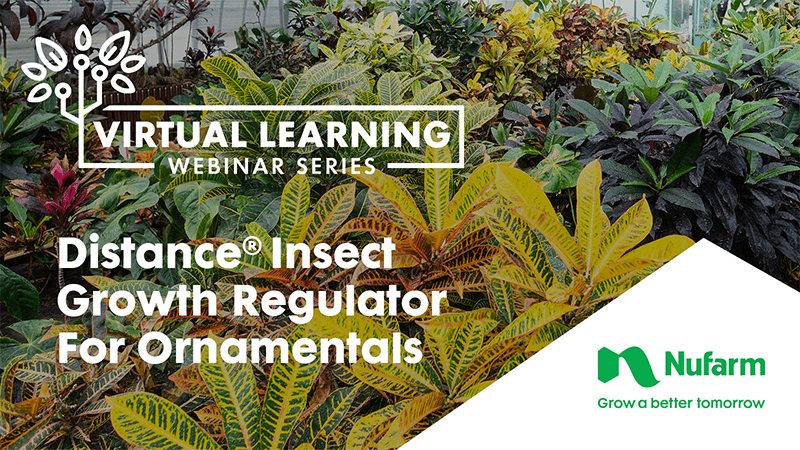Allan Armitage on the Top Perennials for 2023

Perennials solve questions of nativity, pollinators, deer issues, and groundcovers. Photo: Allan Armitage
Last month I shared some thoughts on what I believe to be the building blocks of an annual program; that is, what groups of annuals every grower, installer, and garden center should be talking about. There was nothing earth-shattering about my comments; but then again, with as much interest, excitement, and conversations going on with shrubs, grasses, and perennials, annuals sometimes get a little lost in the shuffle.
When we talk about what solutions annuals provide, we are mostly limited to color. Annuals can help with the issue of shade/sun, but few find their way to lists of natives, pollinators, or even aromatic plants.
So, this month, allow me to follow up my comments on annuals and share my thoughts on perennials. Whereas annuals are renowned for their color, perennials solve questions of nativity, pollinators, deer issues, and groundcovers.
Cultivars abound, many new every year, but in a single page missive like this, it is impossible to recommend one over another. Simply know that there are very few “dogs” in the cultivar mix these days. Choose a few and multiply!
Based on genera, here are several categories of sought-after solutions for your availability list:
North American Natives
While the debate as to the definition of native continues, such arguments are best left for academia. The number of nativars is mind-boggling, so choose those you are comfortable with.
1. The absolute no-brainers: Every garden center, installer, or grower should have these on their availability list. They are on the A-list in nearly every state in the country. All have dozens of nativars, throw a dart. These include Asclepias, Coreopsis, Echinacea, Heliopsis, Heuchera, Hibiscus, Lobelia, Phlox, Rudbeckia, Solidago, and Tiarella.
2. The next tier: These are excellent choices, but some may be lesser known, more difficult to find, or better performers in certain regions of the country. This tier includes Agastache, Amsonia, Baptisia, Eutrochium (Eupatorium), Gaillardia, Heucherella, Liatris, Monarda, Helianthus, and Vernonia.
3. Grasses and Ferns: Some of these are no-brainers as well, but people still tend to think of them more as grasses/ferns, rather than native plants. Popular grasses and ferns are Adiantum (northern maidenhair fern), Andropogon (big bluestem), Muhlenbergia (Muhley grass), Osmundastrum (Cinnamon fern), Panicum (switch grass), and Schizachyrium (little blue stem).
Pollinators
This is the easiest list to fill since every flower on earth opens solely to attract pollinators. I have no idea why this took on a life of its own, but since it did, here are a few to keep everyone happy.
1. Native plants: For better or worse, most people attach the term pollinator to native plant. Even though many natives are no better at attracting pollinators than a juniper, it makes sense to place almost any of the native plants above on your pollinator availability list.
2. Equally good but lesser known as pollinators, many not native: Lesser-known pollinators include Agastache, Allium, Aster, Buddleia, Calamintha, Chelone, Mountain mint (Pycnanthemum), Nepeta, and Salvia.
3. Deer-resistant: Every year I hear that deer are eating everything, even hellebores, so there seems no solution other than lead, fences, and sprays. However, here are plants less attractive to deer that should be on your availability lists. Steer clear of deer with Achillea, Agastache, Ajuga, Allium, Autumn fern (Dryopteris), Baptisia, Carex, Eryngium, Euphorbia, Helleborus, Iris, Monarda, Vernonia, Salvia, Stachys, most herbs (chives, basil, fennel, lavender, rosemary, etc), and many grasses.
4. Groundcovers: This final category is resurging in popularity, perhaps because of the low maintenance aspect of most of these plants. All should be aggressive growers, but do your best to avoid invasives, like English ivy.
Groundcovers include Ajuga, Isotoma, Liriope, Golden creeping Jenny (Lysimachia), Mazus, Ophiopogon, creeping phlox (Phlox subulata), Sedum, Stachys, and Thymus.
In summary, when we talk about perennials, we are really talking about what they can do for the landscape. I have touched on but four categories, each one could be expanded. For easy to access information on all plants, I recommend Armitage’s Great Garden Plants App for iOS and Android.









